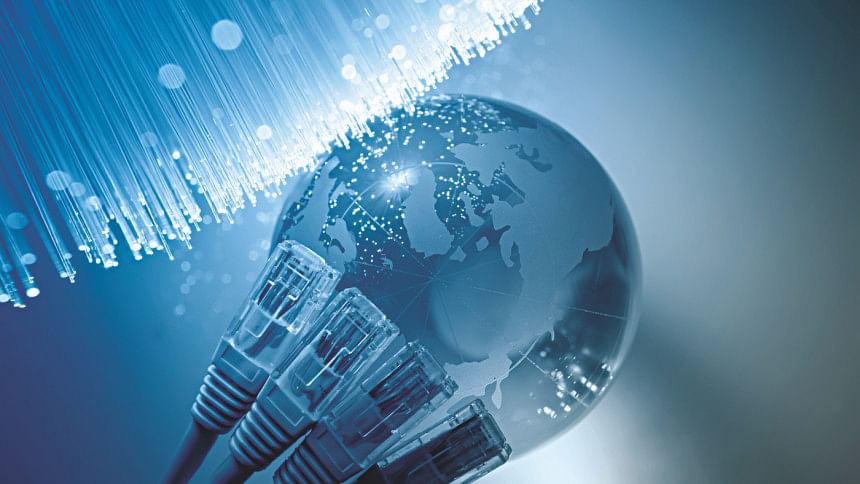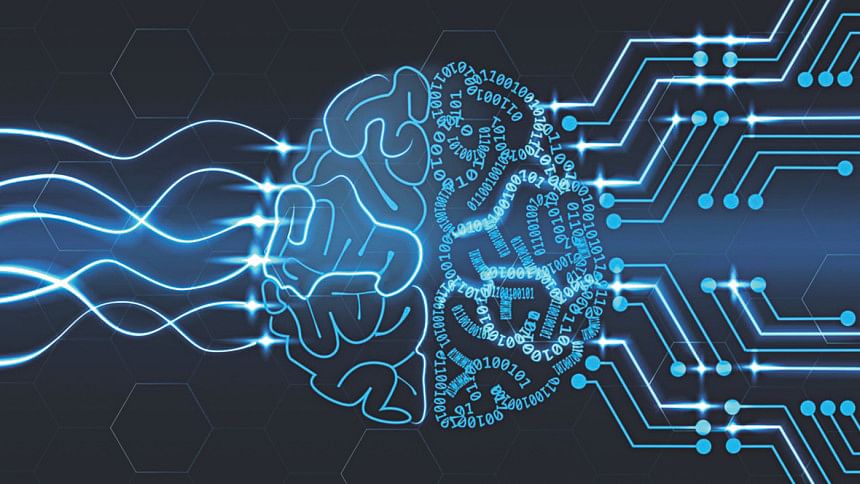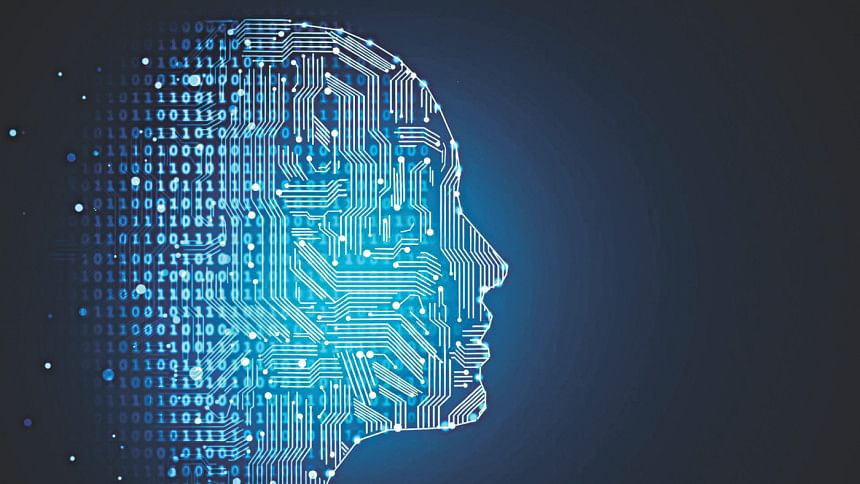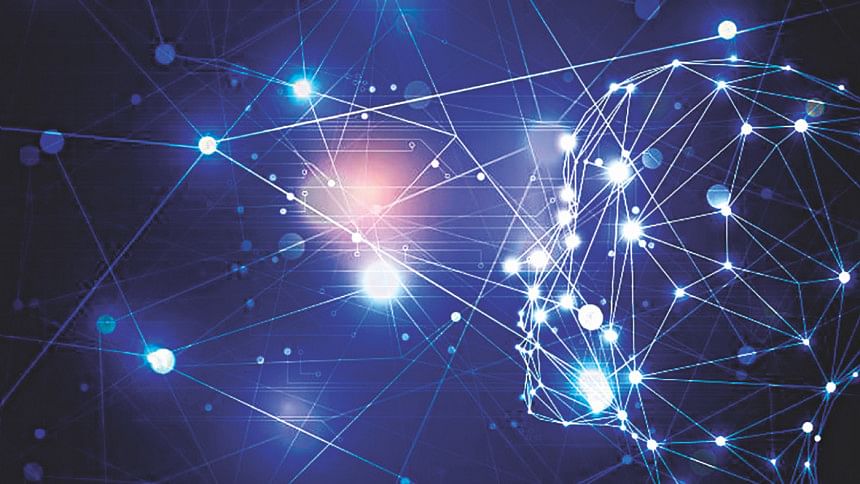Reporting live from the future, Circa 2021, 2031 and 2041

Imagine you're aboard a time machine and have just been whisked first to the year 2021, then to 2031, and finally to 2041, marking the 50th, 60th and 70th anniversaries of the independence of Bangladesh. What's more, you're able to toggle the machine's settings to be able to travel across 2021, 2031 and 2041 in no time at all. Amid the golden, diamond and platinum jubilee celebrations across the country, what would you report about the state of Bangladesh, especially on the scale and scope of her adoption and adaptation of advanced technologies, such as artificial intelligence (AI), towards realising the dreams of a Digital Bangladesh for all? That's exactly the thought experiment we're about to embark upon here. Are you willing to join us in this awesome journey where your observations are, conveniently enough, in the present tense for you to be able to report live from the future?
Welcome! First, a few ground rules: Since we're deploying a very old technology called "poetic license" inside this time machine, we're allowed to disguise the actual names of individuals and institutions and replace them with fictitious ones to protect the innocent; and equally important, we cannot comment on highly specific developments or events, such as the winning numbers for certain lottery jackpots in 2021, 2031 or 2041, without forfeiting the precious privilege of our poetic license here.
On the occasion of her golden jubilee (affectionately known as "subarna jayanti") in 2021, the people of Bangladesh joyfully celebrate the achievement of several milestones put forth in the country's Vision 2021 manifesto, which was the political manifesto of the Bangladesh Awami League before winning the National Elections of 2008. Several golden jubilee celebration programmes have been held in many countries worldwide, including India, Russia, Germany, Sweden, Hungary, Poland, Nepal and Bhutan. Highlights include the fact that Bangladesh is among seven Asian countries whose gross domestic product (GDP) grew around 7 percent through 2020. In real terms, this means Bangladesh's GDP per capita is expected to surpass India's by 2031.

As one of the fastest-growing economies in the world, Bangladesh is now dubbed the next Asian tiger by the World Economic Forum, The Economist, and others—a far cry from the "basket case" that the-then US Secretary of State Henry Kissinger described it as in 1971. This rapid economic growth has contributed to a substantial decrease in extreme poverty from 40 percent in 2005 to less than 20 percent in 2021. A dynamic, growing middle-class of nearly forty million people has propelled Bangladesh to "middle-income" status, according to the World Bank.
Of course, GDP is not the only, or even the most relevant, metric of progress toward the dreams of a Digital Bangladesh, which now includes universal access to personalised self-education and AI-augmented preventive self-care as the preferred form of healthcare throughout the country. Thus, when AI meets digital in Bangladesh, the impact is nothing short of miraculous.
The vintage 2021 version of AI is typically defined as the ability of a machine to perform cognitive functions we associate with human minds, such as perceiving, reasoning, learning, and problem solving. Examples of technologies that have enabled AI to solve business problems are robotics and autonomous vehicles, computer vision, language, virtual agents, and machine learning.

Deep learning is a branch of machine learning that has its roots in mathematics, computer science, and neuroscience. Deep artificial neural networks learn from data the way that babies learn from the world around them, starting from fresh eyes and gradually acquiring the skills needed to navigate novel environments. Deep learning is used at Google today in more than 100 services, ranging from Street View and driverless cars to Gmail Inbox Smart Reply and voice search.
More than 75 percent of trading on the New York Stock Exchange is automated, fuelled by high-frequency trades that move into and out of investment positions in fractions of a second. Deep learning is getting better and better at making more money as hundreds of algorithms are deployed and the best ones are continually combined to optimise financial returns.
People are still talking in 2021 about Google's multiple accomplishments in AI dating back to 2016, one of which is known as the Google DeepMind Challenge Match. This was a five-game Go match between 18-time world champion Lee Sedol and AlphaGo, a computer Go programme developed by Google DeepMind, played in Seoul, South Korea between the 9th and 15th of March in 2016.

AlphaGo won all but the fourth game. AI experts often describe AlphaGo's stellar performance at this ancient Chinese strategy board game of Go as "AI's version of man's landing on the moon."
Another breakthrough came in 2017 when Google's DeepMind subsidiary took a bold leap to creating an AI software akin to general human intelligence with AlphaZero, which learned three computer games, namely Go, chess, and shogi, on its own. Unlike AlphaGo Zero, which received some instruction from human experts to beat its human counterpart, AlphaZero learned strictly by playing against itself, and then went on to defeat its predecessor AlphaGo Zero at Go (after eight hours of self-play) as well as some of the world's best chess- and shogi-playing computer programmes (after four and two hours of self-play, respectively).
AI experts have been so impressed with AlphaZero's superhuman performance that some have declared this accomplishment as momentous as if "the aliens have just landed and the earth will never be the same again."
Throughout the 2020s, AI has been fine-tuned by applying machine learning to very large data sets. Machine-learning algorithms are able to detect highly complex patterns and learn how to make predictions and recommendations by processing data and experiences, rather than by receiving explicit codes or programming instructions from human programmers. The algorithms are also adapted in response to new data and experiences to improve efficacy over time. When applied correctly to the right problems, AI feels like pure magic!
It was the British futurist Arthur C Clarke who once noted: "Any sufficiently advanced technology is indistinguishable from magic." Well, what do we see when we watch a magician pull a rabbit out of a hat? More often than not, we are captivated by the illusion and even applaud the fact that we have been fooled. But the people of Bangladesh have realised since 2021 that advanced technology is no fool's errand but the stuff of real magic. As a result, they have enthusiastically embraced Clarke's above truism (also known as his 3rd Law) along with his two other eponymous "laws" about our technological future in Bangladesh and beyond:
Clarke's First Law: "When a distinguished but elderly scientist claims that something is possible, he is almost certainly right. When he states that something is impossible, he is very probably wrong."
Clarke's Second Law: "The only way of discovering the limits of the possible is to venture a little way past them into the impossible."

Another counterintuitive idea that has gone viral in Bangladesh in the 2020s is attributed to futurist Ray Kurzweil: Thanks to the exponential growth trajectory of many disruptive technologies, we won't experience merely 100 years of progress in the 21st century; it will be more like 20,000 years of progress at AD 2000 rate. Imagine that! Of course, agriculture was invented only about 10,000 years ago and the internet-based worldwide web is only about three decades old now.
The accelerating pace to technological progress is counter to most people's linear way of thinking about the world since for some two hundred thousand years spanning the evolution of Homo sapiens on this planet, it was safe to assume that the world in which humans have lived and died would look pretty much the same as the one in which they were born. But that is no longer the case in 2021 as most of the people in Bangladesh have just witnessed how much things have changed in the first two decades of the 21st century. The shortlist includes hassle-free mobile money transfer through wireless internet, apps-based on-demand services accessible via smartphones, and multiple worldwide connectivity and collaboration platforms to choose from, e.g., Facebook, LinkedIn and Twitter. As a result, people have already started to imagine how vastly different things will be in 2031 and 2041.
People have begun to realise that problems that might have seemed intractable in the past, could become eminently solvable in the near future. Not only does this new mindset inform their investing and planning practices for the future, it also changes what they think of as possible for humanity. Things that they could barely have imagined a few decades ago have now come within reach. For example, chemistry is treated as the world's toolbox. It has become increasingly clear that it is the creative, constructive act of seeing the periodic table of 90+ chemical elements as a palette of new-to-the-world chemical compounds and advanced materials created by combining and recombining the elements—be that carbon, hydrogen, nitrogen, oxygen, phosphorus, silicon or zirconium—to paint a better and brighter future for everyone.
Indeed, combinatorial explosion is one of the few mathematical phenomena that outgrows even the exponential growth trajectory. Throughout the 2020s this has meant that combinatorial innovation is the best way for human ingenuity to outpace even the Moore's Law (named after Intel founder Gordon Moore who observed in 1965 that the number of transistors in a dense integrated circuit doubled about every two years while the cost of computers dropped by 50 percent).
However, in the early stages of combinatorial development, growth is constrained by the number of potentially new and useful ideas, but later on it is constrained only by the ability to go through all the potential permutations and combinations to find the truly valuable ones. The deployment of AI turns out to be critical during this time since when combined with human experience, people are able to make connections between things that at first glance seemed to have nothing to do with each other. Thus, AI-powered curation of combinatorial innovation is poised to become the mantra for the continuation of economic progress in Bangladesh in the 2020s and beyond.
On the diamond jubilee of the country in 2031, Bangladesh is duly recognised as an upper middle-income country with per capita income of USD 5,500 although the odds of achieving this status by most accounts were less than 40 percent back in 2021. What's more, economists are more confident than ever that Bangladesh is on track to achieve the coveted high-income status with per capita income of USD 16,000 by 2041. What follows is a shortlisted selection of developments on the technology fronts that have made it all not just possible, but almost inevitable. Each bold initiative has been a strategic bet placed by the decision-makers toward having AI-powered Digital Bangladesh finally take off and achieving by 2041 the status of a high-income country that is also an equitable, inclusive and just society by design.
BanglaDISH has emerged in the 2020s as the most inclusive digital ecosystem in Bangladesh representing the leading players in the telecom, media and technology sectors at large. The goal has been to drive the adoption and adaptation of AI, especially in improving the delivery of personalised self-education for marketable skills-building and advanced diagnostics-based preventive self-care as the cornerstone of healthcare to everyone in Bangladesh. This multi-industry consortium has also managed to help with closing the GDP growth gap between the actual (around 7 percent) and potential (higher than 9 percent) for Bangladesh to achieve its 2031 and 2041 targets.
Reports from the International Telecommunications Union, for example, have suggested that for a middle-income country like Bangladesh, an increase of 10 percent in mobile broadband penetration yields an increase of 1.8 percent in GDP for the country while an increase of 10 percent in digital ecosystem development index yields an increase of 1 percent growth in GDP per capita. Through its concerted efforts and strategic investments, BanglaDISH has played an instrumental role in boosting the country's mobile broadband connectivity and its digital ecosystem development index to meet the GDP growth rate target of 9 percent from 2021 onward to meet its 2031 and 2041 targets.
Furthermore, according to reports from the global management consulting firm McKinsey & Company, AI has the potential to deliver additional global economic activity of around USD 13 trillion by 2030, or about 16 percent higher cumulative GDP compared with the status quo. This amounts to 1.2 percent additional GDP growth per year. BanglaDISH has been committed to delivering as much of the additional "kicker" as possible to the country's GDP through further penetration of AI and the associated digital infrastructure.
BanglaDISH has also been pushing for a leapfrogging strategy by investing heavily in developing the requisite AI-savvy human capital. It turns out that the concept of leapfrogging originated in the context of economic growth theories that promulgated sustainable development for developing countries by way of accelerating their economic development by skipping inferior, less efficient, more expensive, more polluting technologies and industries and moving directly to more advanced ones.
A case in point is digital communication in developing countries like Bangladesh by moving directly from having few telephones to having widespread mobile phones, thus skipping the stage of copper-wire landline telephones altogether. Another example is the adoption of solar energy technologies to avoid repeating the mistakes of highly industrialised countries in creating an energy infrastructure based on non-renewable fossil fuels and "jump" directly into the Solar Age instead. In other words, the leapfrogging concept implies that Bangladesh could learn from the experiences of industrialised countries, such as Germany and the United States, and reimagine its own economic development path to bypass the potentially expensive and environmentally irreversible damages from an early stage.
The social dimension of the leapfrogging concept entails diffusion and adoption of modern technologies that would not only reduce costs and adverse environmental impacts, but also contribute to the realisation of the United Nations-initiated Sustainable Development Goals (SDGs), such as no poverty, zero hunger, good health and wellbeing, and quality education, among others.
Since its launch in 2021, Newseum has been another bold initiative in Bangladesh for enabling the country's key decision-makers to directly experience what's possible in the future from where the future has already happened, namely the "front-runners" in the so-called Fourth Industrial Revolution or Industry 4.0. Billed as the "museum of news you can use" to accelerate the pace of meeting the country-specific SDGs ahead of the 2030 deadline while managing the transition to Industry 4.0 with minimal disruption, the Newseum has also become a virtual laboratory for AI-powered innovation and cross-industry collaboration in Bangladesh and beyond.
For example, Newseum has invested heavily in learning from direct "go & see" visits to the Industry 4.0 "lighthouses" curated by the World Economic Forum (WEF) that serve as beacons of digital transformation journeys for organisations worldwide. A Newseum-sponsored visit in 2021 to one of the sites in the WEF lighthouses network, namely the Bayer Pharmaceuticals Division in Garbagnate, Italy, inspired the leading pharmaceutical companies in Bangladesh to adapt their production practices to leapfrog to Industry 4.0 levels with unprecedented increases in efficiency with minimal displacement of workers. This catapulted the Bangladesh pharmaceutical industry to the top spot—ahead of the ready-made garments industry—by 2031 as the government and industry worked together to develop the requisite assets and capabilities to be among the global leaders in the production of advanced biopharmaceuticals.
By 2031, Newseum has evolved into an AI-powered virtual reality platform with the rank and status of a lighthouse based in Bangladesh showcasing the best practices and technologies representing the WEF-endorsed Industry 5.0 framework, which by now has also evolved to incorporate environmental sustainability, social responsibility and good governance practices. And not a moment too soon, 2041 is the year when Newseum gets recognised by the Prime Minister's Office as a national treasure as the country celebrates its platinum jubilee. The spectacular celebrations have included a laser-light show (as an environmentally friendly alternative to the traditional air-polluting fireworks) along with highly orchestrated online virtual reality demonstrations of joy that made everyone in Bangladesh, which is duly recognised as a developed economy in terms of its GDP per capita, to be proud of the fact that the country has come a long way since its humble beginning in 1971.
Sam G Samdani, PhD, is a senior industry knowledge expert at McKinsey & Company, a global management consulting firm.
E-mail: [email protected]
The views expressed here are his own and do not necessarily represent that of McKinsey & Company.

 For all latest news, follow The Daily Star's Google News channel.
For all latest news, follow The Daily Star's Google News channel. 



Comments